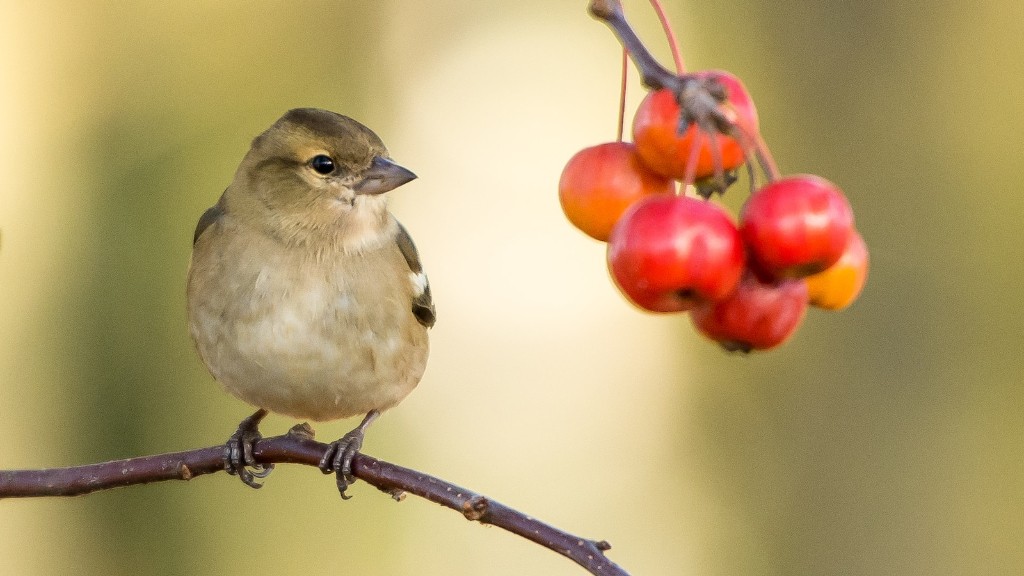Pruning an established apple tree is an essential step in promoting healthy and productive growth. Knowing when and how to prune your apple tree is important to maintain its health and robustness. Here are some tips to help you prune your apple tree successfully:
First, it’s important to identify the proper time of year to prune your apple tree. The best time to prune is in late winter or early spring, after the tree’s dormant period but before buds start to form. This will give your apple tree a strong start to its growing season.
Second, use sharp tools when pruning; dull tools can cause unnecessary damage to your apple tree and lead to poor-quality pruning cuts. The recommended tool for pruning is a pruning saw, though pruners, loppers and shears can come in handy for smaller branches.
Third, remove any dead, diseased, or damaged branches to reduce the risk of infection and encourage better circulation of water and nutrients in the tree.
Fourth, pay special attention to any crossing or rubbing branches, as well as branches with poor growth. These can be removed to improve the tree’s structure and shape.
Fifth, look for branches that are growing too close to one another and prune away any excess branches to maximize the amount of light and air circulation within the tree’s canopy.
Finally, always make your pruning cuts at a slight angle. This will encourage faster healing and prevent disease or insect infestation in the pruning wounds.
Pruning Theory and Benefits
It’s important to understand the basic theory behind pruning an apple tree. Pruning encourages new growth and helps create an edible crop. By removing the excess foliage, more energy is focused on the production of flowers and fruit. Pruning can also help maintain the shape of the tree and improve the apple tree’s structure.
When pruning your apple tree, you should focus on removing branches that are growing in an undesirable direction or crowding each other. Good pruning practices can also help reduce the risk of disease and pest infestations. Pruning can help reduce the effects of wind and sun damage and can help improve the tree’s resistance to harsh weather conditions.
Pruning your apple tree can also help improve the quality of fruit produced by the tree. Pruning creates more light and air circulation within the tree, which in turn helps stimulate flowering and fruit production.
It’s important to remember good pruning practices when pruning your apple tree; stout pruning cuts and cuts that are too close to branch collars can cause lasting damage to the apple tree and reduce its overall lifespan.
It’s also important to remember that over-pruning your tree can have a negative effect; removing too much foliage can reduce leaf production and reduce the growth potential in the apple tree.
Pruning Techniques
Three-Year Renewal Pruning is an effective pruning technique for established apple trees. This technique involves removing at least one-third of the branches annually, and ultimately removing all of the branches of the top section of the tree. This will encourage new growth that is more vigorous and healthy.
Canopy Pruning is a popular pruning technique used to improve the shape and structure of the tree, as well as to reduce the risk of wind damage. This technique involves pruning the center of the tree to create an open, vase-like shape. This will allow more light and air circulation within the tree to stimulate flowering and fruit production.
Water Sprout Pruning helps to prevent the formation of new, unwanted water sprouts in an established apple tree. Water sprouts are more aggressive than lateral branches, and often have a thinner bark and less robust structure. Pruning these sprouts can help reduce the risk of breakage and help maintain the tree’s shape.
Crown Raising is a pruning technique used to improve the structure of an established apple tree. This technique involves removing lower branches to create a higher canopy, which can help reduce the risk of wind damage and improve light and air circulation within the tree.
Coppicing is another pruning technique used to stimulate fruit production in an established apple tree. This technique involves pruning the branches back to one or two buds, which will encourage new growth that is more vigorous and productive.
Pruning Do’s and Don’ts
When pruning an established apple tree, it’s important to remember to prune the tree at the proper time of year and with the proper tools. Make sure to remove any dead, diseased, or damaged branches as well as crossing branches to encourage better air and light circulation. Finally, make sure to always prune your tree at a slight angle to encourage faster healing.
Do not prune your trees during their active growth stage, as this can lead to poor cuts and excessive pruning damage. Try to avoid pruning the central leader of the tree, as this can drastically reduce the tree’s growth potential. Do not make too many drastic pruning cuts; it’s better to gradually shape your apple tree.
Finally, do not prune your tree too heavily; too much foliage removal can prevent flowering and fruit production. Keep these tips in mind when pruning your apple tree to ensure that you are practicing proper pruning techniques and promoting healthy growth.
Methods of Disposal
Once you have finished pruning your apple tree, it’s important to properly dispose of the discarded branches. Leaving them on the ground can attract pests or spread disease, so it’s important to dispose of them properly.
One option for disposing of the branches is to mulch them up and spread them around the base of the tree. This will help improve the nutrient balance in the soil and provide an extra layer of protection from pests and disease.
You can also use the branches for firewood. Applewood burns cleanly and flavorful, making excellent home firewood. The pruned branches will quickly dry and be ready for burning.
Another option for disposing of the branches is to use them for compost. Dried applewood chips make excellent compost, as the chips help aerate the soil and can help fertilizer your garden. The chips can also help create a soil-like texture, which can be beneficial for growing plants.
Finally, you can also use the branches as animal bedding. If you have rabbits, guinea pigs or chickens, they will love the soft, comfortable bedding created from the pruned branches.
Safety Precautions
When pruning an established apple tree, it’s important to take safety precautions to ensure that no one gets injured. Always wear protective gear, including a hard hat, eye protection, and gloves. Secure any necessary ladders or other equipment, and always use a spotter when working at raised heights.
Be sure to inspect your tools and make sure that they are in good working order. Dull tools can cause unnecessary damage to your apple tree, and can lead to poor-quality pruning cuts. Never leave your tools in the tree, as they can be difficult to access when needed.
When pruning, keep an eye on the wind. Pruning your apple tree in high winds can lead to accidents, as well as poor pruning cuts. Make sure to only work when the winds are calm, and be aware of any gusts that could lead to accidents.
Finally, never prune on your own. Always make sure that someone else is with you when pruning an established apple tree, as it can be a hazardous job. Having someone there to help you can be invaluable and can help avoid any potential accidents.



